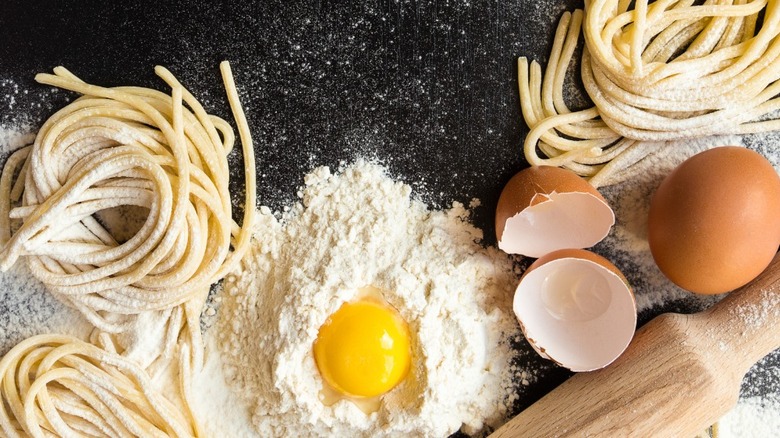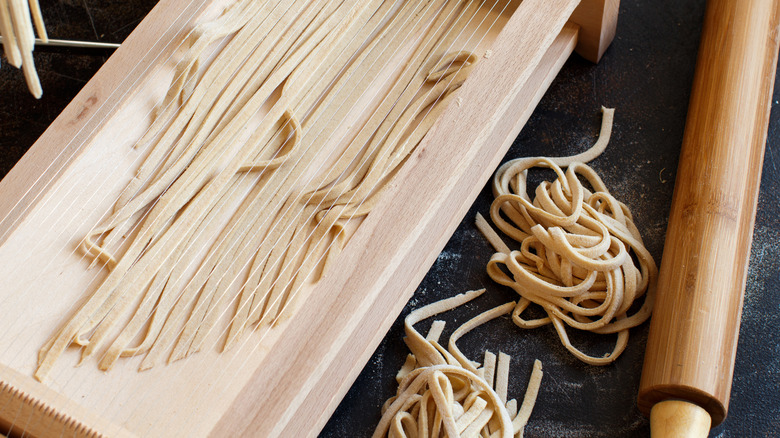For The Best Homemade Pasta Prep, You Need A Chitarra
A perfectly executed meal can often be compared to that of a symphony. In a series of inspired steps, the carefully orchestrated act of cooking eventually leads to a delicious grand finale. When it comes to pasta, this musical analogy proves all too true in the case of spaghetti (or maccheroni) alla chitarra. The Italian word for "guitar", chitarra is also the name of a unique culinary tool that resembles its namesake. Adding a touch of authenticity to your pasta-making experience, the chitarra makes pasta prep a breeze.
Rather than fumble around the kitchen, searching for the proper attachment, you can avoid hand-cranking pasta machines entirely (or at least partially) with the help of a chitarra. With several metal strings draped across the tool's wooden box, sheets of pasta can be cut into strands by using a bit of elbow grease. Once pieces of dough have been hand-rolled to a thickness of about ⅛ of an inch, the sheets are placed one by one over top of the chitarra's metal strings before being pushed through under the force of a rolling pin.
While the process sounds fairly straightforward, eliminating the skill and precision needed to cut pasta by hand, this doesn't mean that perfectly thin and uniform pasta strands are a guarantee the first time you use the tool.
Using a chitarra properly takes practice
Making the best pasta from scratch is a matter of practicing. The more comfortable you are working dough and using a chitarra, the better the result will be. However, there are some tips and tricks that'll make the process simpler.
Although good pasta starts with good ingredients, how you handle the dough as it meets a well-tuned (tightened) chitarra is just as important. For example, always ensure that pieces of rolled dough are of the proper thickness and size, as sheets that are too long or too wide won't be cut evenly. Likewise, taking the time to flour on either side of the chitarra is also important to prevent pasta from sticking to the strings and from sticking to each other once strands are formed. However, the most important thing to remember is not to lose momentum when rolling, as you may need to evenly run your pin upwards of 15 times before strands are eventually cut.
Given the dedication it takes to use a chitarra, all that effort shouldn't be wasted on the wrong sauce. With a coarse yet porous texture, strands are best served with rich ragù that can cling to noodles. While in its native Abruzzo, spaghetti alla chitarra is often paired with tomato sauce and mini meatballs, but the pasta is also an excellent match for saucy seafood or a creamy cacio e pepe sauce. With countless tasty possibilities, a chitarra is exactly what you need to craft a culinary masterpiece.

